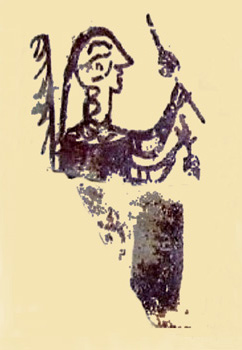Textiles and rituality in the late Tartessian Culture of the Guadiana valley
 Resumen
Resumen
After the downfall of the Guadalquivir’s Tartessian Culture at the end of the 6th century BC, the Tartessian core located along the Middle Guadiana Valley continued its cultural and economic development as a type of hybrid response, having a unique, prosperous period throughout the 5th century BC. The archaeology of this complex society is represented in Tartessic lowland buildings covered by tumuli, like the well-known examples at Cancho Roano (Zalamea de la Serena, Badajoz) and La Mata (Campanario, Badajoz). In the case of the former, remnants from textile activities like spinning and weaving are plentiful, including loom weights, spindle whorls, and metal and bone needles, as well as pins. Textile fibres were not recovered; however, recent finds provide insight into the technical and ritual meanings of textiles in these unique contexts. An example of this are the discoveries at the Casas del Turuñuelo site (Guareña, Badajoz), a newly-excavated building under a tumulus that produced fabrics and textile tools. These new discoveries are presented herein, along with a review of prior finds to bring us new interpretations.
 Descargas
Descargas
Descargas
Publicado
Cómo citar
-
Resumen510
-
PDF 381
Número
Sección
Licencia

Este obra está bajo una licencia de Creative Commons Reconocimiento-NoComercial-SinObraDerivada 4.0 Internacional.
Con la publicación impresa de los trabajos, los/as autores/as aceptan que el Departament de Prehistòria, Arqueologia i Història Antiga de la Universitat de València pueda permitir la difusión y el libre acceso a través de las direcciones electrónicas y enlaces del editor/a.
El contenido de los trabajos es responsabilidad de los/as autores firmantes y no expresa la posición ni la opinión del Consejo de Redacción.
Las obras que se publican en esta revista están sujetas a los siguientes términos:
1. La revista conserva los derechos patrimoniales (copyright) de las obras publicadas, y favorece y permite la reutilización de las mismas bajo la licencia indicada en el punto 2.
2. Las obras se publican en la edición electrónica de la revista bajo una licencia Creative Commons Reconocimiento-NoComercial-SinObraDerivada 3.0 España (texto legal). Se pueden copiar, usar, difundir, transmitir y exponer públicamente, siempre que se cite la autoría, la url, y la revista, y no se usen para fines comerciales.
3. Los/as autores/as están de acuerdo con la licencia de uso utilizada por la revista, con las condiciones de auto-archivo y con la política de acceso abierto.
4. En caso de reutilización de las obras publicadas debe mencionarse la existencia y especificaciones de la licencia de uso además de mencionar la autoría y fuente original de su publicación.



